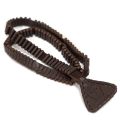This website uses cookies to ensure you get the best experience on our website. Read more
Non-Ferrous Metals Workshop of St Elisabeth Convent


The workshop of non-ferrous metals opened in 2007. Today there are artists, chemists, welders and jewelers working there. These people are true masters of their craft and are able to create true art from given metals.
Artistic work with metals requires skills and attention to the smallest detail. There are many different ways of artistic production of metals both by hand and through machinery. This enables the convent to produce large orders or accommodate custom requests.


Some of the techniques date back to 10-13 centuries and remain valuable until today This includes engraving, embossing, forging, casting, filigree, wrought silver and many others. In the past, these techniques could only be done by hand and therefore they require specific skills. At the same time, they are irreplaceable when we talk about the creation of a unique work of art.
Other techniques began to appear much later around 17-19 centuries. This was mainly due to the industrial development and advancements in science. This includes galvanoplasty or electroforming, etching, new ways of casting and electro chemical metalwork.


First, the artist and specialist decide which technology to use, since each technological selection will have its own characteristics. The idea is then written down, where the artist outlines the details, keeping in mind the particularity of the material and what type of work can be done to it to make the result more beautiful. Only after everything has been thought out, selected, drawn up, will the specialist begin to create and bring a dream into reality.
Special attention should be directed to the ancient technique of Filigree. It is considered the most interesting way to create a work of art. In fact, filigree allows for the one of a kind laced design made out of thin silver or copper wire and requires quite a bit of work. Out of the tiniest pieces of woven wire on a metallic or paper sheet and with the use of special thongs the wire is laid out, and then it is welded into a certain pattern with the use of fire.


Another technique is Galvanoplasty. This is an electrochemical process, which results in a thick layer of metal being places on top of the desired object. Galvanoplasty is used when a piece of the original metal detail has an irregular form and cannot be created with standard methods. This method allows for high precision and the ability to create and perfect objects to the smallest detail.
Wrought Silver (Basma) is viewed as a standalone style of metalwork, which can also be considered as a perfected style of embossing. For this technique, the first step is to prepare the wrought silver board also called the matrix. It appears as a low monolithic relief with soft and delicate forms without sharp edges.


The embossing itself is done with a mallet or a press through a lead sheet and in some cases even rubber. The workshop uses this technique to embellish various articles including icons; icon books stands, arks and many others.

















